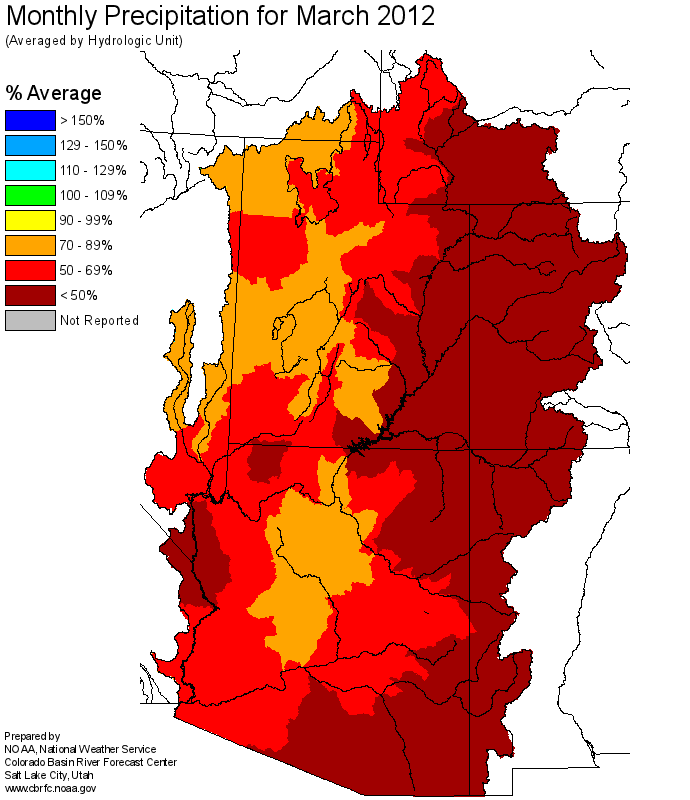In an email last week, Kevin Werner at the Colorado Basin River Forecast Center called March 2012 “one of the warmest and driest on record in the Upper Colorado Basin.” The Forecast Center’s April 1 numbers are the ones you can start taking to the bank, with the bulk of the snow accumulation season behind us and melting and runoff now underway.
The Bureau of Reclamation has translated the runoff forecast from Kevin and his colleagues into reservoir numbers. The latest “24-month study” (pdf) shows the results. Total estimated storage combined in the reservoirs behind Hoover and Glen Canyon dams is down 1.469 million acre feet from the estimate just one month ago. Because of the equalization rules currently in place, intended to balance storage in Mead and Powell, Lake Mead is estimated to end the year with a surface elevation of 1,114.3 feet above sea level, down a bit less than 2 feet from a year ago. Powell’s estimated end-of-year surface elevation is 3,632.55 feet above sea level, down a bit more than 20 feet from last year.
Overall, total net storage in the two big reservoirs by the end of September is estimated to be 28.2 million acre feet, down 2.4 maf from the previous year. Remember that bodacious snowpack of 2010-11, all the bonus water filling both of the big lakes? 46 percent of last year’s bonus water will be gone by the end of this year, according to the new 24-month study.


Apologies for this repetitive advice, but given the excess allowance that evolved from over-optimistic Colorado river runoff projections, the two big Colorado River dams serving as a buffer will eventually reach “dry” status unless all users (especially California) agree to a lower, more realistic quantification settlement agreement (California’s 4.4 MAF should probably be more like 4.0 or less MAF. Urban conservation should include phasing out useless “for show” front lawns, discouraging swimming pools and requiring pool covers for the ones that still exist. And lastly, potable reuse (direct and indirect) needs to become part of the normal infrastructure.
Pingback: 2011: Year of the Flood, 2012: Year of the Drought? » Hydraulically Inclined
Pingback: Hookers and blow on the Lower Colorado – boring wonky back story : jfleck at inkstain